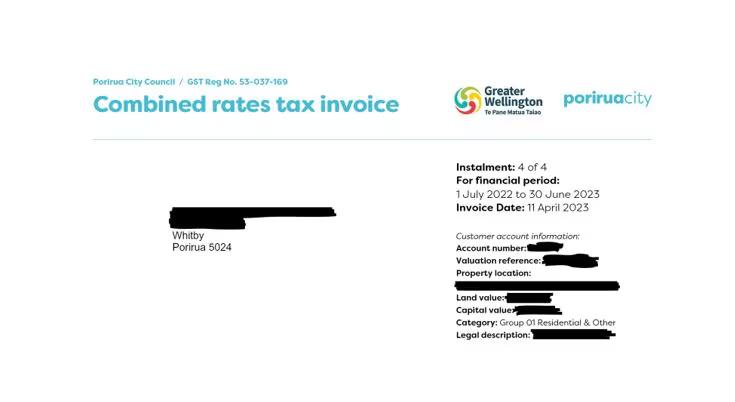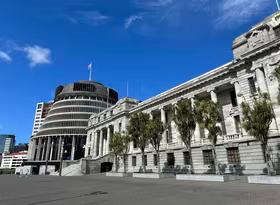The recent Future of Local Government report highlighted again the funding constraints faced by local government. With a considerable scope of operations, local government rates and operating income is tiny in comparison to the scale of central government revenues.
Talk of funding reform is not only long overdue, but also now comprehensively analysed. Yet although there are clear reasons for providing more central government revenue to local government to fund activities delegated to a local level, there remains an unexplored funding gap. Current central government funding is fully utilised, and there’s no easy spare pot of money that can be readily made available to local councils. Central government will need to carefully determine where funding to local government will come from.
How much income does central and local government collect?
Over the year to June 2022, local councils across New Zealand collected a total of $12.3b in operating income, of which $7.4b was directly from rates. These figures have risen year on year as the population grows, costs of goods and delivering services rise, and more tasks get added onto the local government plate.
In contrast, central government in the June 2022 year collected $117.5b in Core Crown revenue, of which $108.5b was from taxes. Total government revenue was larger still, at $141.6b.
Taken together, local government revenue only made up 9.5% of combined government revenue (using Core Crown revenue as the central government indicator) – the lowest share of combined government revenue since 2008.
Since 2000, local government operating income has been 10.1% of combined government revenue on average.
Central government a third of GDP, local government can’t even break 4%
As noted above, civic organisation financial measures at a country-wide level usually show an increase in income and spending levels over time. This sustained increase is due to the expansion of the population, economy, cost pressures, and what’s being delivered. A common way to assess the underlying trend in spending and income at this level is relative to the size of the economy (measured in terms of nominal GDP).
On this basis, the small size of local government becomes even clearer. In 2022, local government rates revenue was only worth 2% of GDP, and total local government operating revenue was less than 4% of GDP. Central government’s funding dominance is clear to see, with Core Crown revenue equal to nearly 33% of nominal GDP in 2022.
High level, and more consistent, funding needed
The Future of Local Government report notes that “[n]umerous previous reviews of local government funding have highlighted the problems and recommended changes to the system to ensure that councils can more sustainably fund their activities ... However, central government has failed to enact these recommendations and the issues are compounding … Many local government activities directly support national-level wellbeing priorities and outcomes. These have been allocated to local government by central government over the past few decades, often without the provision of additional funding (the unfunded mandate).”
Aside from the technical details of actual funding provision, four elements become clearer in the future need for local government funding:
- A higher level of funding is required, and an obvious pathway is for central government to provide a consistent annual sum to local government, funded from central taxes, with various ways to determine the apportionment of this funding.
- Central government should ensure that activities provided for at a local level are paid for, so that additional tasks undertaken by local government are compensated by central government directly, and that central government determine the level of funding outlined above based on the tasks that local government do but might not have the income to support.
- A more reliable and consistent level of funding for local government is needed, rather than various one-off contestable pots of funding for various infrastructure projects with varying scopes, administration requirements, and administering agencies (for example: the Housing Infrastructure Fund (MHUD), Housing Acceleration Fund (MHUD), Infrastructure Acceleration Fund (Kāinga Ora), Tourism Infrastructure Fund (MBIE), Shovel Ready Projects (Crown Infrastructure Partners), Provincial Growth Fund (Kānoa - Regional Economic Development & Investment Unit) and the list goes on). Instead, a long-term fund for infrastructure, akin to the National Land Transport Fund, would provide better long-term results than small piecemeal approaches.
- Getting the incentives on funding right, so that local government is funding in the right ways to ensure that they are enabled to unlock future development rather than hinder it due to lack of funds and ensuring that funding provided is utilised in the areas that it is most needed.
Fund now or forever hold your piece(s)
The need for additional funding into local government is clear. It’s also been clear for a long time, but with no appetite from central government to share the spoils of the dominant government earnings. It’s important that this additional report, urging action to support local funding, isn’t again ignored until another report comes along in a few years’ time to say the same thing. Wait too much longer, and central government might need to pay a whole lot more to fix a strained sector unable to fund all the tasks it’s been given. Remember, maintaining what you’ve got is a lot less expensive than having to undertake emergency repairs for a blown pipe.













